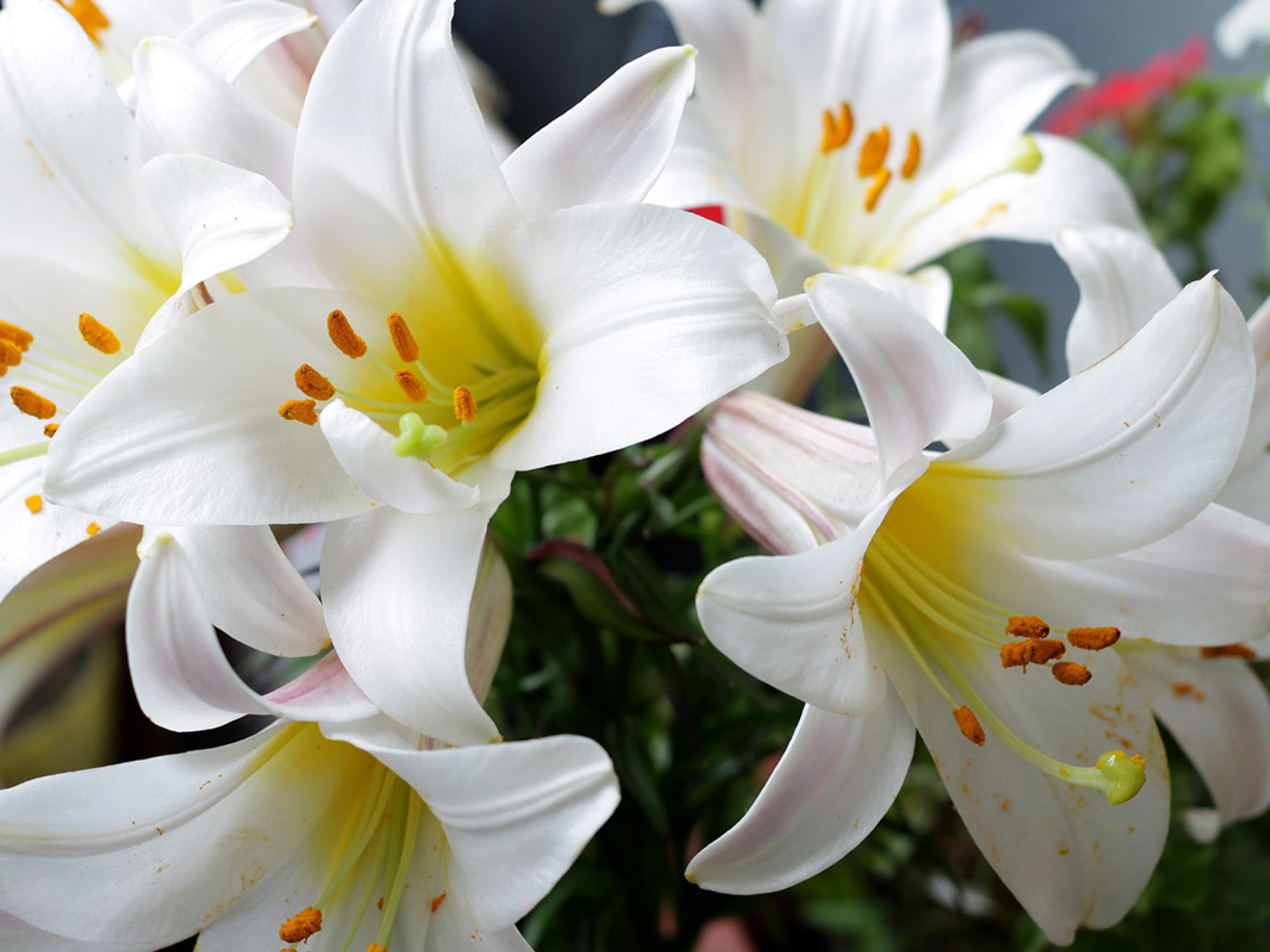Easter lilies (Lilium longiflorum) are a popular flower during the spring season, known for their elegant white blooms and pleasant fragrance. Whether you’ve received an Easter lily as a gift or purchased one to brighten up your home for the holiday, taking proper care of these stunning plants will ensure they thrive long after Easter has passed. This blog post will guide you through selecting the perfect Easter lily and how to care for it, so it continues to bloom beautifully.
Selecting the Perfect Easter Lily
When choosing an Easter lily, it’s essential to pick a healthy plant. Here are some tips to help you find the best one:
1. Look for Fresh Blooms
The most important aspect of any flower purchase is to ensure the blooms are fresh. Look for lilies with buds that are still closed. Closed buds will open over time, giving you weeks of enjoyment. Avoid plants with blooms that are already fully open or wilting.
2. Check for Healthy Green Leaves
The leaves of an Easter lily should be bright green and free from yellowing or spots. Healthy foliage is a sign of a well-cared-for plant. If you notice damaged or discolored leaves, this could indicate poor growing conditions or neglect.
3. Check the Roots
If possible, check the roots of the plant. A well-rooted plant should have firm, white roots. Avoid plants with roots that are brown or mushy, as these may indicate overwatering or disease.
4. Consider the Pot Size
Easter lilies often come in decorative pots, but ensure that the pot isn’t too small for the plant’s root system. A pot that is too small can restrict growth and water absorption. The best pot will provide some room for future growth and will have drainage holes to prevent waterlogging.
Caring for Your Easter Lily
Once you’ve selected the perfect Easter lily, it’s time to focus on caring for it so it can flourish. With proper care, your Easter lily can bloom year after year.
1. Ideal Location
• Easter lilies prefer bright, indirect sunlight. Place them in a location that receives plenty of light but is shielded from harsh afternoon sun, which can scorch their delicate petals.
• A windowsill with filtered light or near a well-lit indoor space is perfect. If you want to place your lily outside, ensure that it is not exposed to high heat or direct sunlight for prolonged periods.
2. Watering Your Lily
• Water the plant regularly, but make sure the soil is allowed to dry out slightly between waterings. Easter lilies like moist but not soggy soil, so always check the top inch of the soil before watering.
• Avoid overwatering, as this can lead to root rot. Ensure that the pot has good drainage to let excess water escape.
3. Temperature and Humidity
• Easter lilies thrive in moderate temperatures (60-70°F or 15-21°C). Keep the plant away from hot drafts, radiators, and air conditioners.
• They enjoy moderate humidity. If your home is very dry, consider placing the plant on a tray filled with pebbles and water to increase the humidity around it.
4. Fertilizing Your Easter Lily
• To encourage healthy growth and vibrant blooms, feed your Easter lily with a balanced, water-soluble fertilizer every 2-4 weeks during the growing season (spring and summer).
• Avoid over-fertilizing, as this can harm the plant. A well-balanced fertilizer designed for flowering plants is ideal.
5. After the Blooms Fade
• Once the Easter lily’s flowers start to fade, it’s time to cut the flower stalks back. Trim the stem near the base to encourage the plant to focus its energy on new growth.
• If you want to keep the plant as a perennial, continue to care for it even after it finishes blooming. Keep it in a cool, bright location and water it regularly.
6. Replanting Your Lily for Next Year
• After the blooms have finished, you can move your Easter lily outside once the weather warms up. Choose a spot with well-drained soil and plenty of indirect sunlight.
• Easter lilies are hardy in USDA Zones 4-9, so they can thrive outdoors in these regions.
• In the fall, once the foliage begins to die back, cut it down to the ground and mulch around the base. This will help the plant survive the winter and come back strong next spring.
Troubleshooting Common Problems
While Easter lilies are relatively easy to care for, they can sometimes face a few issues. Here are some common problems and their solutions:
1. Yellowing Leaves
• If the leaves begin to yellow, this can be a sign of overwatering or poor drainage. Reduce watering, ensuring the soil dries out between waterings, and check that the pot has proper drainage.
2. Wilted Blooms
• Wilted blooms may indicate the plant is not getting enough water or is exposed to too much heat. Make sure it’s in a cool, indirect light spot and water regularly.
3. Pests
• Although rare, Easter lilies can attract pests like aphids or spider mites. If you notice small pests, gently wipe the leaves with a damp cloth or use an insecticidal soap to get rid of them.
Conclusion
Easter lilies are a wonderful addition to any home or garden. With proper care and attention, they can bloom beautifully year after year. By selecting a healthy plant and following these care tips, you can enjoy their elegance and fragrance throughout the Easter season and beyond. Happy planting!




Leave a comment
This site is protected by hCaptcha and the hCaptcha Privacy Policy and Terms of Service apply.